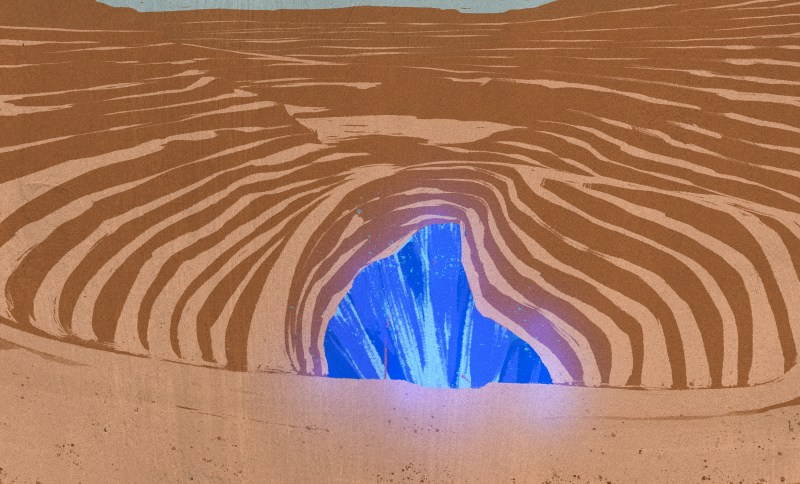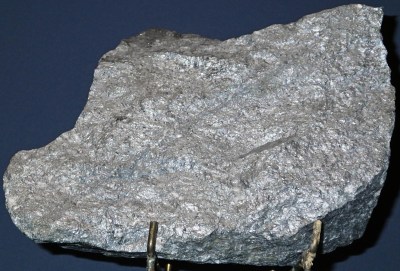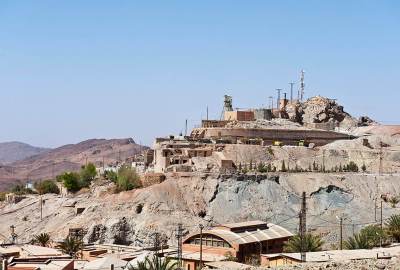
The story of humankind is largely a tale of conflict, often brought about by the uneven distribution of resources. For as long as we’ve been down out of the trees, and probably considerably before that too, our ancestors have been struggling to get what they need to survive, as often as not at the expense of another, more fortunate tribe. Food, water, land, it doesn’t matter; if They have it and We don’t, chances are good that there’s going to be a fight.
Few resources are as unevenly distributed across our planet as cobalt is. The metal makes up only a fraction of a percent of the Earth’s crust, and commercially significant concentrations are few and far between, enough so that those who have some often end up at odds with those who need it. And need it we do; what started in antiquity as mainly a rich blue pigment for glass and ceramics has become essential for important industrial alloys, high-power magnets, and the anodes of lithium batteries, among other uses.
Getting access to our limited supply of cobalt and refining it into a useful metal isn’t a trivial process, and unfortunately its outsized importance to technological society forces it into a geopolitical role that has done a lot to add to human misery. Luckily, market forces and new technology are making once-marginal sources viable, which just may help us get the cobalt we need without all the conflict.
A Side of Cobalt
The chemical properties of cobalt play a large role in its uneven distribution. Like aluminum, it’s essentially impossible to find any elemental cobalt in nature, and for much the same reason — it reacts readily with oxygen, forming oxides that are fairly inert. It also tends to form minerals that are closely associated with other metals, like copper and nickel. In fact, almost all cobalt produced today — 98% — is a byproduct of mining and refining those two important industrial metals.

Cobalt also easily forms minerals that incorporate sulfur and, unfortunately, arsenic. There are over 30 different ores that bear cobalt in commercially significant concentrations, making it hard to pinpoint one main ore. However, the geology that makes these diverse ores readily available is fairly limited, and knowing what sorts of rock formations cobalt ores are likely to be found in helps explain why viable deposits are scattered around the globe.
Cobalt ores tend to occur in two broad geological settings: sedimentary and volcanogenic. Sedimentary deposits, which account for more than 50% of cobalt mining today, are sandstones and shales that formed beneath ancient oceans and lakes, where organic sediments accumulated and eventually mineralized, mainly with metal sulfides. Two large sedimentary deposits are the European Kupferschiefer, or “copper shale”, and the Central African Copperbelt. Both of these deposits contain vast amounts of copper sulfides along with a significant amount of associated cobalt minerals.
Volcanogenic ore deposits, on the other hand, come from hydrothermal processes, where copper and cobalt sulfide minerals precipitate from fluids passing through hydrothermal vents. These mineral deposits originally form on the sea floor, but tectonic activity and other geological processes eventually expose these minerals or put them close enough to the surface to make for relatively easy access. Volcanogenic cobalt deposits are very rare indeed, with only a handful scattered across the globe, and are the only formations where cobalt is mined as a primary product, rather than as a byproduct of copper or nickel mining.
Old Sources, New Methods
The vast majority of cobalt currently produced is a byproduct of copper production, and since the ores for the two metals are so closely associated in their sedimentary deposits, it’s not possible to selectively mine one or the other. So the process of extracting cobalt from its ores is essentially the same as mining and refining copper, which we’ve already covered in this series. Briefly, crushed sulfide ore from vast open-pit mines is heaped up in pits with impervious linings to catch a rich mineral soup that’s leached from the rock by a constant rain of sulfuric acid. Copper is pulled out of the solution by electrolysis, leaving behind a spent electrolyte that is relatively rich in cobalt and other metals.
A series of chemical precipitation steps and a secondary leaching step selectively remove the other metals from the electrolyte, gradually enriching the cobalt in the solution until it can finally be precipitated out by adding lime to create cobalt (II) hydroxide. Despite cobalt’s association with the color blue, the precipitate is a lovely shade of pink; the famous “Cobalt Blue” pigment only results when cobalt (II) oxide is mixed with aluminum oxide.

For the few commercially viable volcanogenic cobalt sources, such as the Bou-Azzer mine in Morocco and the new Idaho Cobalt Operations (ICO) project, the recovery process is quite a bit different, mainly because the cobalt concentration in the rocks is usually significantly lower. The plan for the ICO project, which will be the only cobalt mine in the United States and the first to open in decades, shows just what’s involved in recovering cobalt as a primary product from these deposits.
The ICO project is located outside of the city of Salmon, Idaho, in the middle of the Salmon-Challis National Forest. The site is located in a 1.6-billion-year-old geological formation known as the Idaho Cobalt Belt, which was first developed in the 1940s as the need for a domestic source of cobalt became obvious after World War II. An open-pit mine operated there until the early 1980s, when cheaper foreign sources of cobalt made it hard for the mine to stay viable.
An open-pit mine in the middle of a pristine forest would be a hard sell these days, of course, so the mine’s new owners, Australia’s Jervois Mining, will be investing in deep-shaft mining to access the ore, which is primarily cobaltite, which is a compound of cobalt, arsenic, and sulfur (CoAsS). The veins they’ve identified are up to 1% cobalt, which is pretty rich for a volcanogenic deposit, and occurs alongside some decently rich chalcopyrite copper ore, as well as a good amount of gold.
The ICO project is just getting started, with work beginning on the mine workings and on the concentrator plant that will process the ore on site. When the project is in full swing, ore will be transported up from the mine face to the surface, to be stockpiled before being fed into a jaw crusher plant. The crushed ore will then be sent to a ball mill to be reduced to a powder and made into a slurry with the addition of water. A surfactant called potassium amyl xanthate (PAX) will then be added before the slurry is sent to a series of froth flotation tanks. Here, air will be injected into the slurry, which thanks to the PAX will form large bubbles. The metal sulfides will float to the top and be skimmed off, while the heavier rock bits will fall to the bottom of the tank. After thickening with vacuum filtration, the concentrate will be dried, bagged, and shipped off-site for further refining using the electrowinning methods described above.
Cobalt at Any Price
The ICO project is expected to produce about 45 million pounds (20,400 tonnes) of cobalt and 175 million pounds (80,000 tonnes) of copper before being closed up for site remediation by around 2030. In a global market that produces about 116,000 tonnes every year, the Idaho project might seem like small potatoes, but the fact that new sources of cobalt are being developed is good news, primarily because it stands to offset some problematic cobalt sources.
In 2021, about 60% of the world’s supply of cobalt came from the Democratic Republic of Congo (DRC), which sits atop a big chunk of the Central African Copperbelt and is no stranger to conflict over cobalt. The majority of that is mined in traditional mines and refined as described above, but a huge portion comes from what’s euphemistically known as “artisanal miners.” These are generally desperately poor people who locate high-grade cobalt deposits outside traditional mines and gather ore manually. The work is incredibly dangerous, both in terms of the usual hazards found in any mine, and compounded by the lack of personal protective equipment, the presence of toxic materials, and the threat of violence from other miners. Children are used as labor, and the miners sometimes earn only pennies a day.
Despite the challenges, the artisanal miners are incredibly productive — in 2021, they produced more than twice as much cobalt as Russia did. Bringing previously unviable deposits like those in the Idaho Cobalt Belt into production might offset some of this demand, which is of course a double-edged sword since cobalt is the only source of income for many artisanal miners. The whole thing may be academic, though, since global cobalt demand is predicted to rise to almost a quarter-million tonnes annually by 2025, which suggests the struggle for cobalt will do nothing but continue to escalate.
0 Commentaires